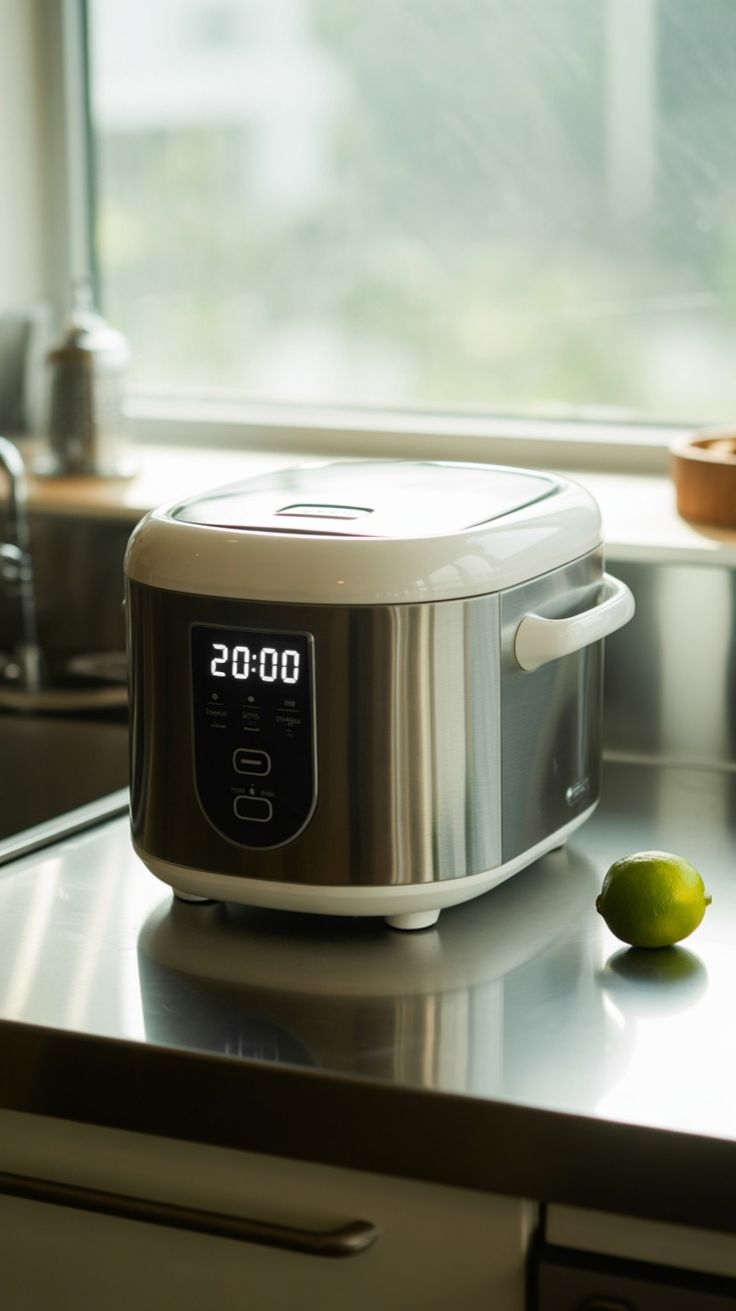A rice cooker is a valuable kitchen appliance, consistently delivering perfectly cooked grains with minimal effort. To ensure its longevity, optimal performance, and hygienic operation, regular cleaning and proper maintenance are essential. Neglecting these simple steps can lead to sticky rice, unpleasant odors, and even a shortened lifespan for your beloved appliance. This guide outlines the best practices for cleaning and maintaining your rice cooker, keeping it in top condition for years to come.
Daily Cleaning: After Every Use
The most crucial aspect of rice cooker maintenance is cleaning it immediately after each use. This prevents rice residue from drying and hardening, making cleanup much easier.
- Unplug and Cool: Always unplug the rice cooker from the power outlet and allow all parts to cool completely before cleaning.
- Remove Inner Pot: Take out the non-stick inner cooking pot. Most modern inner pots are designed for easy removal.
- Wash Inner Pot: Hand-wash the non-stick inner pot with warm, soapy water and a soft sponge or cloth. Avoid abrasive scrubbers or harsh detergents, as these can damage the non-stick coating. Rinse thoroughly and dry completely before storing or reassembling. Many inner pots are dishwasher-safe, but hand-washing is often recommended to preserve the non-stick surface.
- Clean Inner Lid (if removable): If your rice cooker has a removable inner lid (which many advanced models do to prevent starch buildup), detach it and wash it with warm, soapy water. Pay attention to any gaskets or seals, ensuring all rice residue and starch are removed. Rinse and dry thoroughly.
- Wipe Down Exterior: Use a damp cloth to wipe the exterior body of the rice cooker. Be careful not to get water into the electrical components. Dry with a clean cloth.
- Empty Condensation Collector (if applicable): Some models have a condensation collector that gathers excess moisture. Empty and clean this regularly to prevent mold or odors.
Regular Maintenance: Beyond Daily Cleaning
Beyond the daily routine, a few extra steps will ensure your rice cooker continues to perform optimally.
- Clean the Heating Plate: Periodically, check the heating plate at the bottom of the main unit for any spilled rice, water, or debris. Use a slightly damp cloth to wipe it clean. For stubborn, burnt-on residue, you can use a small amount of baking soda paste and a soft cloth, then wipe clean with a damp cloth and dry thoroughly. Ensure the heating plate is completely dry before plugging in the unit.
- Inspect and Clean the Steam Vent: The steam vent can accumulate starch and residue, which can affect cooking performance and potentially cause boilovers. Use a small brush or a damp cloth to clean the vent, ensuring it’s clear and unobstructed.
- Check Gaskets and Seals: Over time, rubber gaskets and seals around the lid can wear out, become discolored, or harbor odors. Inspect them for cracks or damage. Clean them thoroughly, and if they are removable, you can soak them in warm, soapy water. Replace them if they show signs of significant wear or damage, as a proper seal is crucial for effective cooking.
- Avoid Abrasive Cleaners and Tools: Never use steel wool, abrasive scouring pads, or harsh chemical cleaners on any part of your rice cooker, especially the non-stick inner pot. These can scratch surfaces and damage coatings.
- Proper Storage: Store your rice cooker in a clean, dry place. Ensure all parts are completely dry before reassembling and storing to prevent mold or mildew growth.
By dedicating a few minutes to proper cleaning and maintenance after each use and performing occasional deeper cleaning, you can significantly extend the life of your rice cooker, ensuring it continues to produce perfectly fluffy rice for countless meals to come.

